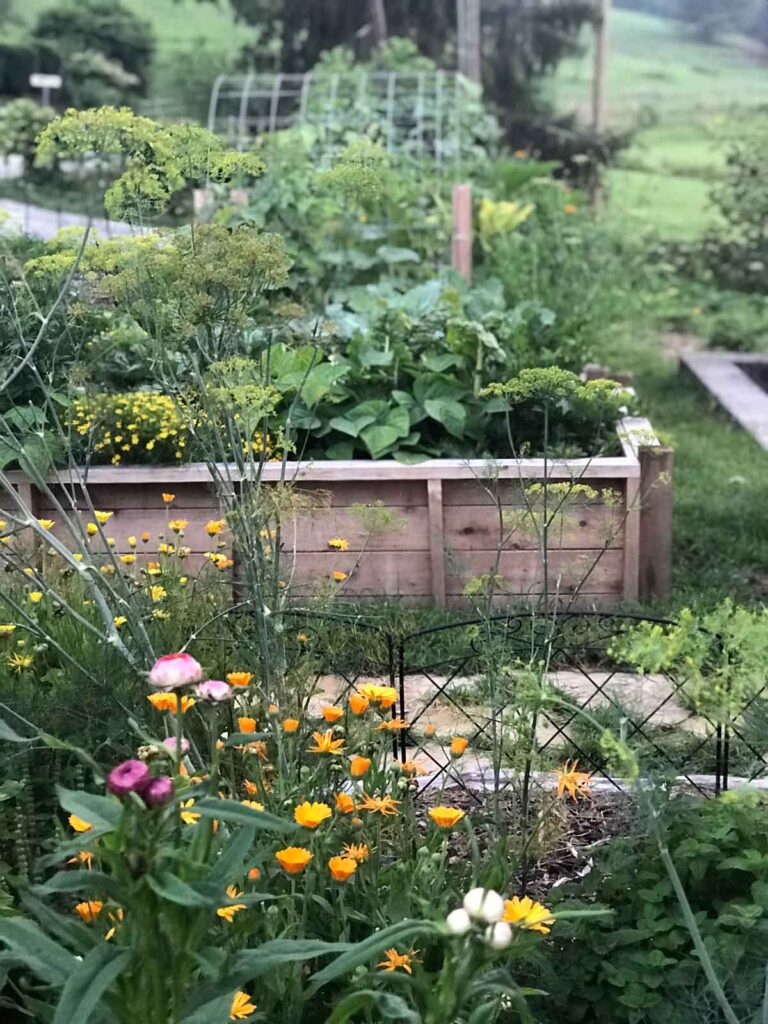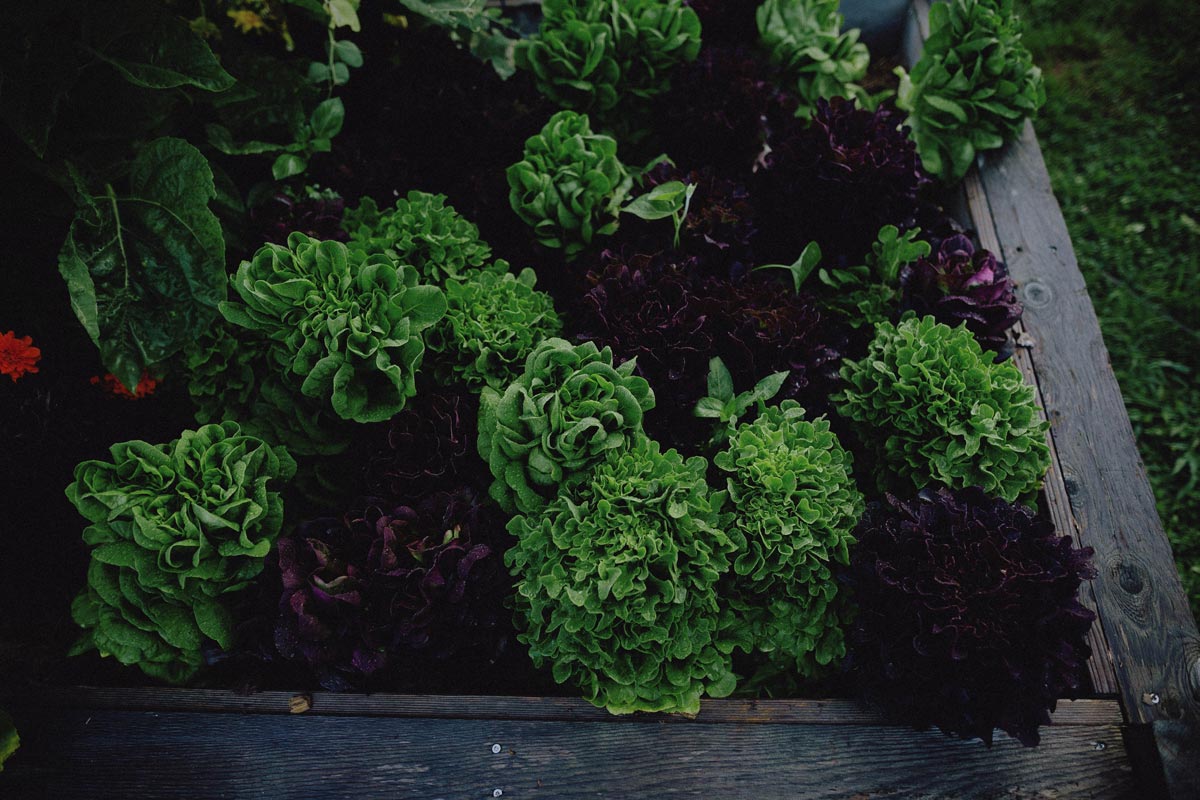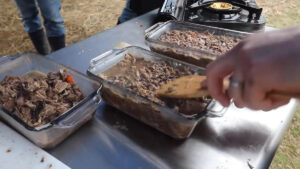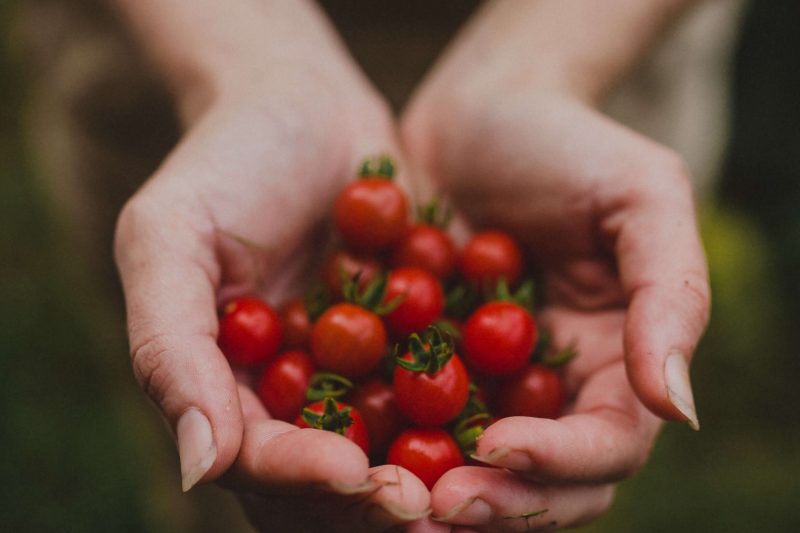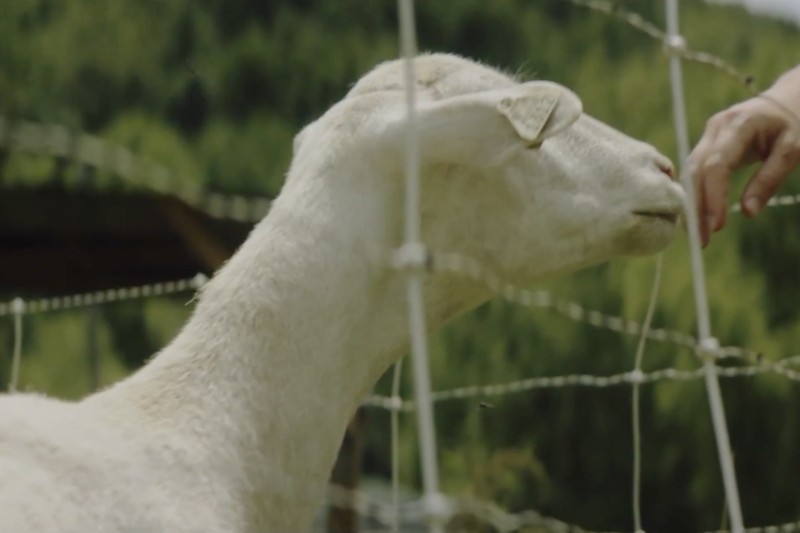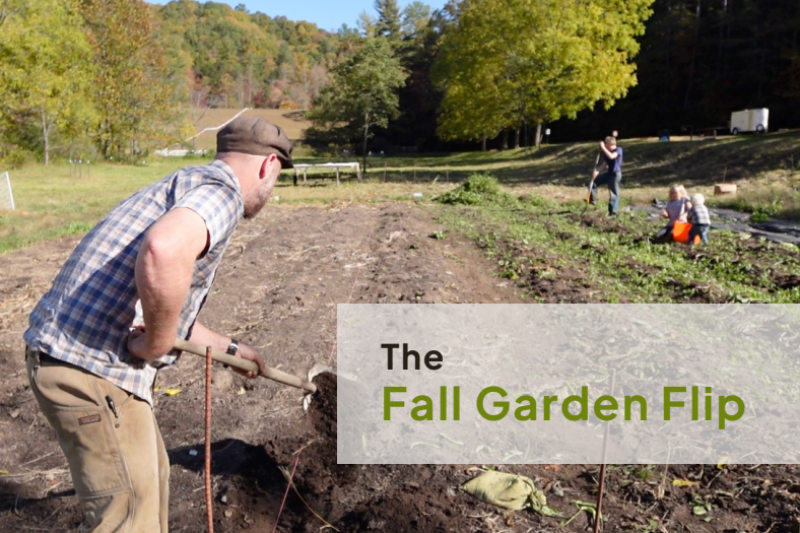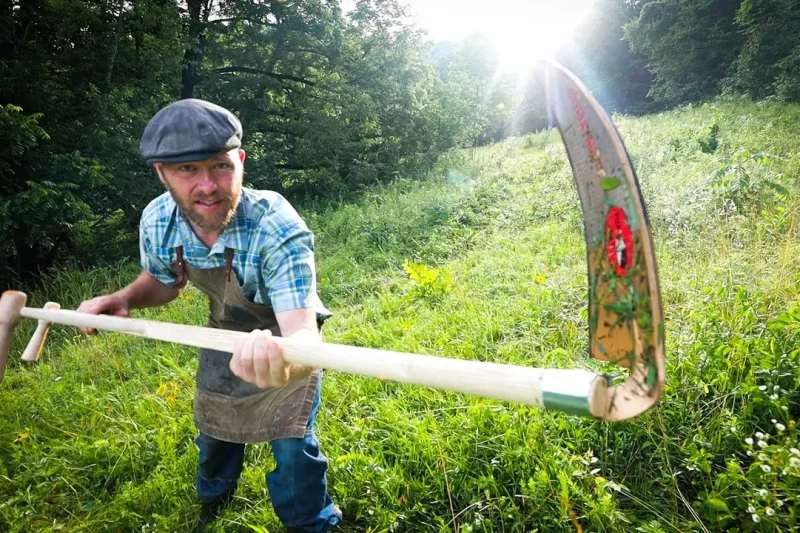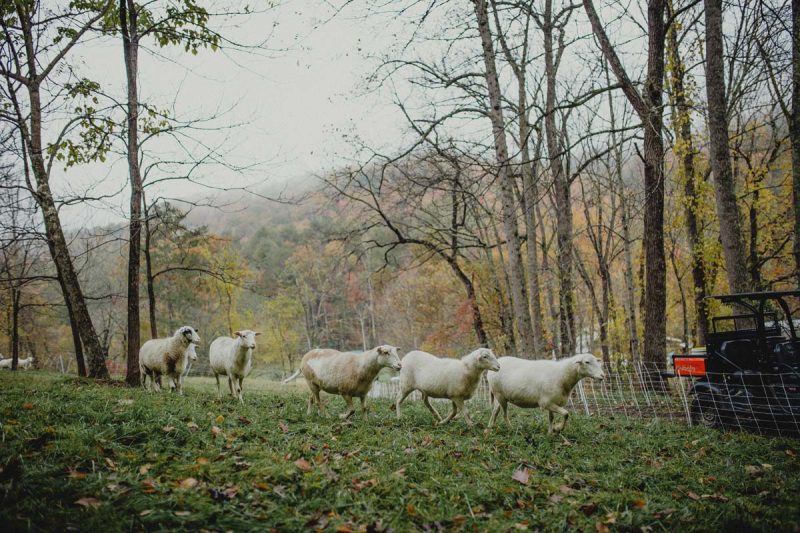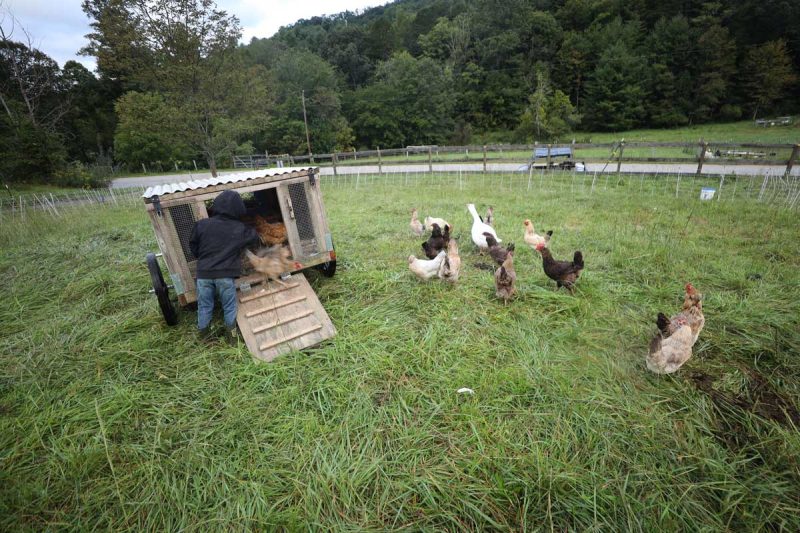Read on to learn genius tips and tricks to make your life easier and save time while growing an organic garden at home.
Gardening Hacks to Support Sustainability
My family set out to find out how much food we could grow in just 100 days, including planting fast-growing vegetables, companion planting perennial crops, and raising meat chickens in just eight weeks!
We learned so much along the way. The experience provided many learning opportunities to improve the process, saving time and increasing our yields.
Gardening hacks support living sustainably and promote the ability to do more for less. Below you will find a collection of my best tried and true gardening tips.
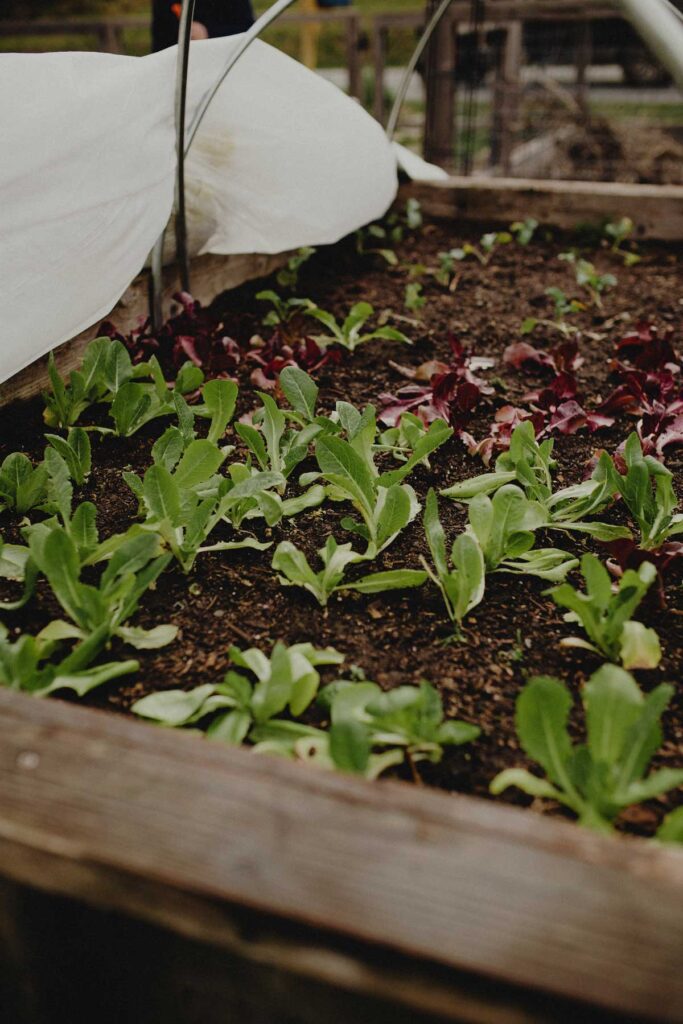
Grow Food Fast
If you want to grow food fast, consider planting leafy greens like lettuce, kale and spinach. You’ll have seedlings in less than a week, and your plants will be a couple of inches tall in four weeks. In six to eight weeks, fresh greens will be on your table. How amazing is that?
Garden Hose Quick Connect
Having quick connections off and on nozzles will save you considerable time in your garden and make watering a lot easier. Don’t waste any more time trying to thread sprinklers or spray nozzles onto your hoses properly.

Fogg-It Nozzle
The Fogg-It nozzle offers a fine spray perfect for watering newly planted seeds and delicate seedlings. Use it in connection with a quick-connect hose connector. You need these in your garden tools arsenal.

Soil Blocker
A soil blocker is an excellent little tool that pulls up squares of soil just the perfect size for starting seeds. We use plain old potting soil with ours and pack it tightly into custom-made wooden trays. Plastic pots would also work to hold the soil blocks.
Plant the seed right on top of the soil for more exposure to oxygen, and you’ll have seedlings in no time. Pro-Tip: Place a coffee filter at the bottom of your tray to provide good drainage and aeration.
Check out this post to learn more about soil blocking.
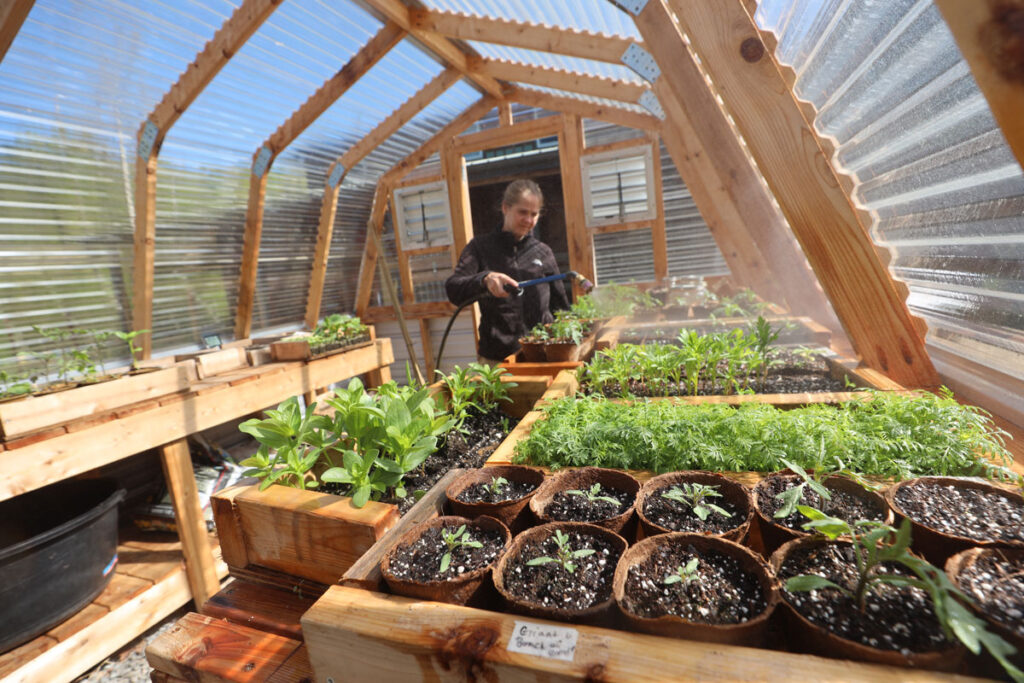
Cedar in Your Greenhouse
Cedar wood is ideal for building a greenhouse. It smells incredible, and it’s rot resistant too. It’s a little more expensive but well worth it and lasts a long time.
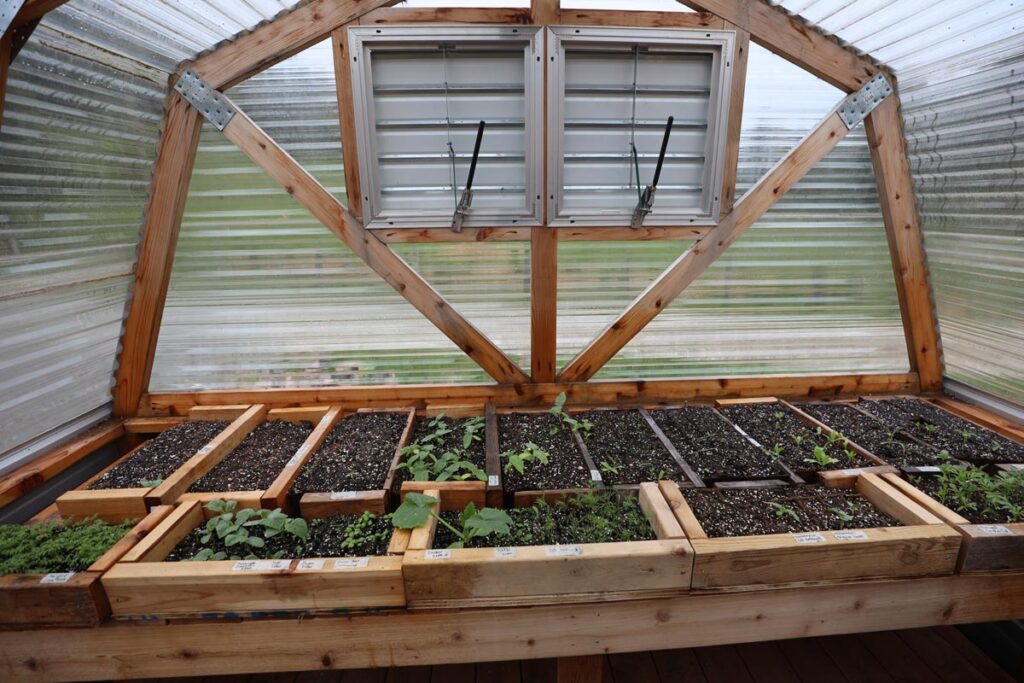
Solar Powered Greenhouse Vents
Vents are essential in a greenhouse. Having a greenhouse that’s too hot can be just as dangerous to your young plants as having it too cold. But who always remembers to check the temperature in the greenhouse and open the vents when necessary?
Get solar-powered vents set on a thermostat to open and close depending on the greenhouse’s temperature.
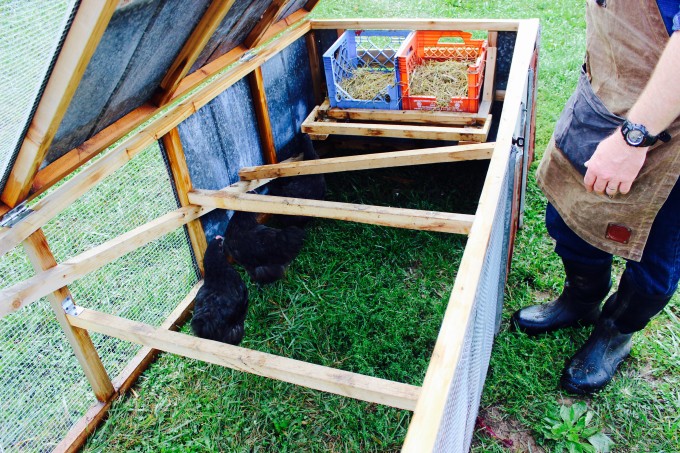
Chicken Tractor
Chicken tractors are the easiest way to move your chickens. You can use these chicken tractor plans to build one 40-inch x 8 feet, which is the perfect size for a garden bed.
Use the chickens to help you till a garden space and spread their manure to make a garden bed ready while your seedlings grow in your greenhouse.
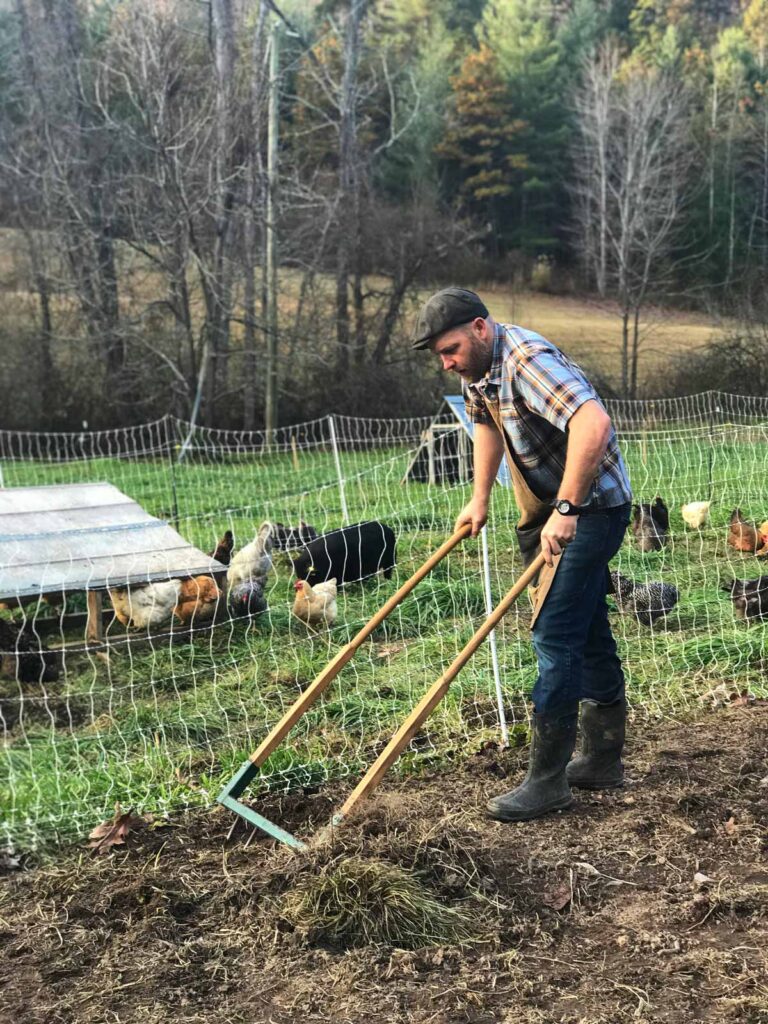
Broadfork
A broadfork is excellent for getting those stubborn weeds out of the ground and getting water and air to move down into the soil’s environment. Tilling the soil damages the microorganisms underneath, but broad forking keeps them in place.
Jump on the broadfork and ride it back and forth to get it into the ground, then pull it toward your waist to loosen the soil. It’s a great workout.
Weed Barrier
Use a weed barrier when planting a new garden. I recommend a non-toxic weed barrier paper like DeWitt organic garden weed barrier. Weed barrier paper will help hold in moisture and kill the grass underneath.
Use cardboard in a pinch but remove all tape and any shipping labels. Remove any remnants of glue from the cardboard. Glue on the cardboard can contain toxins.
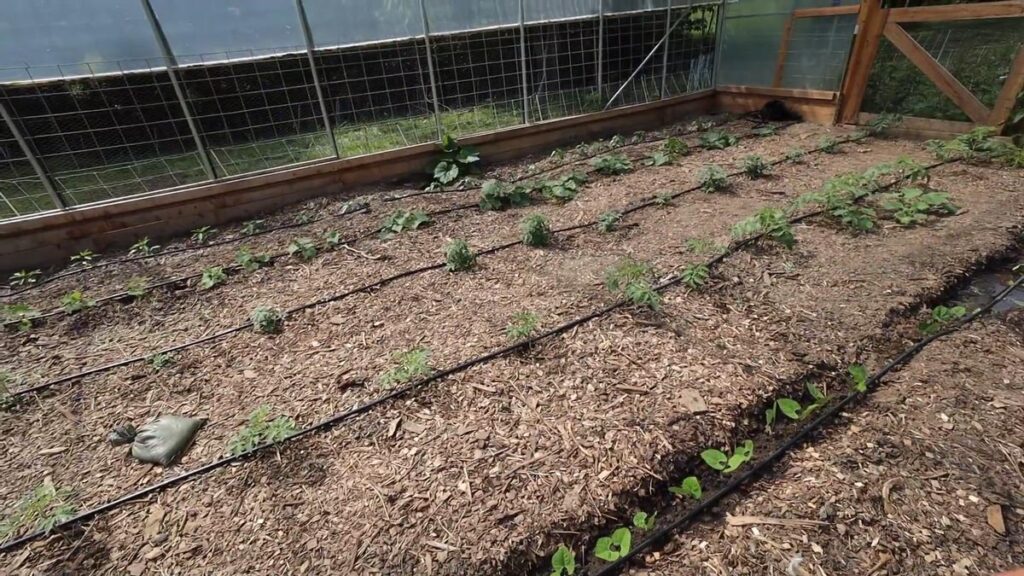
Mulch/Grass Clippings
Use mulch or grass clippings to mimic nature’s covering. Nature is a modest lady, and she wants to be covered. Your garden will benefit from the moisture and insulation that mulch will provide.
Apply one to two inches in flower and vegetable beds to retain moisture and moderate soil temperatures.
Silage Tarp
Lay a silage tarp over your future garden area for several benefits. First, it will create a warm and moist environment which will kill weeds and grass. It also makes the perfect setting for worms and microorganisms to work, loosening the soil.
In a matter of weeks, you will have a composted garden ready to plant your seedlings.
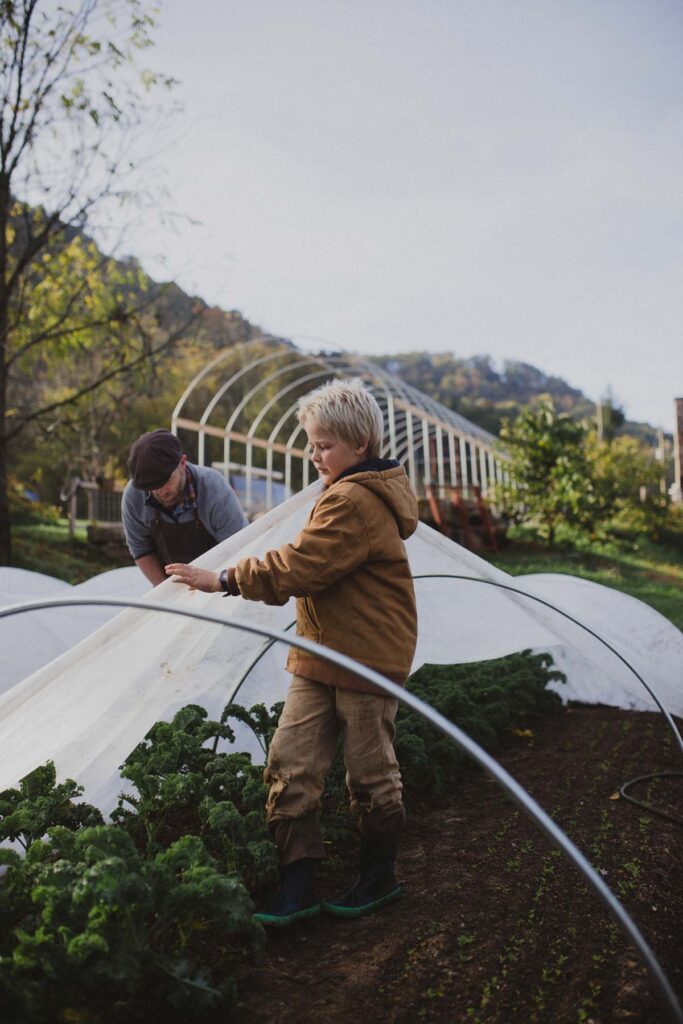
Garden Cover
I love cabbages, but these seasonal plants are susceptible to bug attacks, so what can you do? Cover them with a garden cover and protect those precious cabbages from attack.
Garden covers are made from a fine mesh fabric. They are very effective at blocking insects like the dreaded cabbage moth and allowing sunlight, air and rain to come in.
Made from a fine mesh fabric, a garden cover effectively blocks insects like the dreaded cabbage moth and allows sunlight, air and rain to come in.
To protect small plants, you can cut the bottom off of milk jugs and place them over the plants. If the day becomes hot, take off the cap to vent the air—these work to protect the plant from pests and also act as mini greenhouses.
Gardening Hacks to Repel Pests
Put plastic forks in your garden with the tines pointing upward to prevent animals from nibbling on your vegetables and herbs.
Coffee grounds in the soil around your lettuce, beets, beans and peas will repel squirrels and rabbits.
Mineral oil can be mixed with water and sprayed on fruit trees and other plants to smother insects and eggs on the bark and stems. Although this is considered an organic treatment, I recommend using neem oil instead.
Prevention is the best method when it comes to pests. You can learn how to use chickens in your garden and orchard for pest and disease control here.
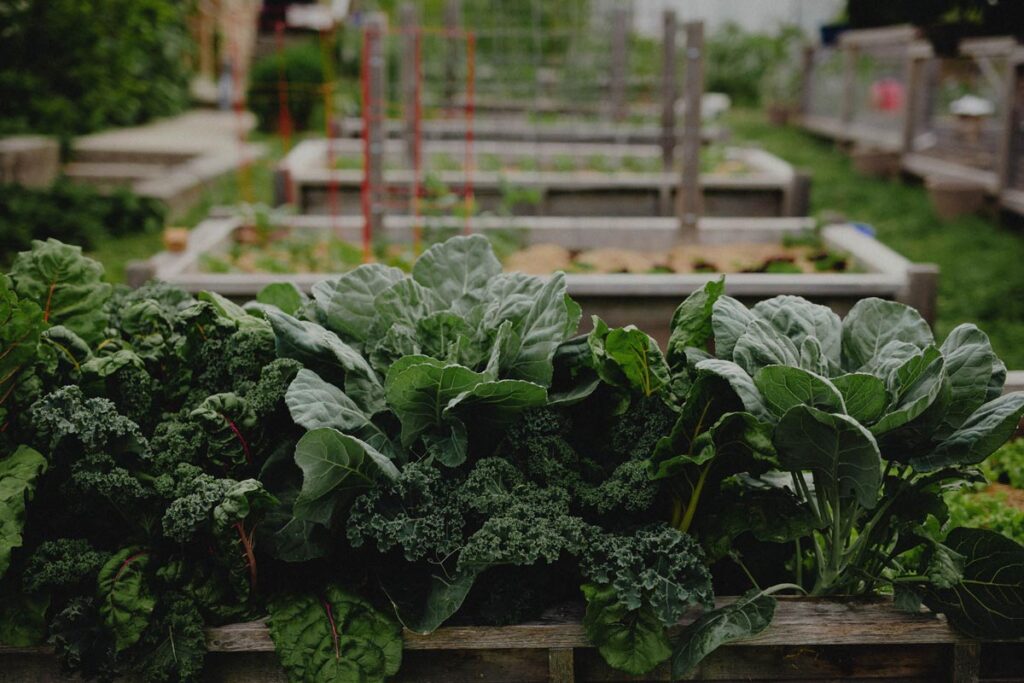
Raised Beds
If you’re struggling with back pain or have a disability, consider building raised garden beds. To fill the bottom of your raised beds inexpensively, follow the Hugelkulture method using organic materials like wood chips, leaves, and grass clippings.
If your raised beds do not have a hole in the bottom or are lined with landscape fabric or plastic to protect the wood, poke small holes in the bottom for drainage. Too much water will discourage beneficial insects from living in your soil.
With all these gardening hacks you’re sure to have success growing a garden this year! For more gardening information, check out the blog posts below.
